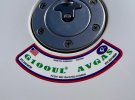AVGAS is not delivered via pipeline due the low volume.
The transition volume (the part where two separate loads mix) is larger than a typical AVGAS slug. This was from someone with a lifetime in the petroleum industry and a pilot.
I have never seen the tanker check the specific gravity of the fuel before it leaves the truck.
Unleaded AVGAS should be perfectly OK to be mixed into the MOGAS stream (especially in the small amounts compared to MOGAS), so the only real concern is switching a truck from MOGAS to AVGAS and that could potentially require a rinse with AVGAS to remove any MOGAS.
The high was 2019 with 92 million gallons of AVGAS sold for the year. In comparison, there is about 8.8 million BARRELS (370 million gallons) of MOGAS sold, PER DAY.
I don’t know who is delivering your 100LL, but a specific gravity test is supposed to be performed when the fuel is loaded and prior to delivery in the airport tanks. Yes, there are lazy drivers who don’t do their job.
The american Petroleum institute (aPi) gravity test measures how heavy or light a petroleum liquid is compared to water. this test is performed with a thermo-hydrometer. if there is a change in aPi gravity compared to the numbers recorded on the bill of lading from the fuel’s last storage location, this may indicate that a cross contamination exists with another product. this test will not tell you what type of contaminants are present, but it will allow you to see if the fuel has changed since it left the last storage area.
TO CONDUCT AN API GRAVITY TEST YOU WILL NEED:
• an astM approved thermohydrometer graduated in degrees of aPi gravity and Fahrenheit or Celsius for the type of fuel you are testing
• a glass or plastic hydrometer cylinder
• an aPi gravity calculator, or a book of petroleum measurement tables
YOU SHOULD USE ASTM APPROVED THERMO-HYDROMETERS:
• For turbine fuel (Jet-a & Jet-a1), use 54hl and 55hl
• For Jet-B, use 55 hl and 56hl thermohydrometers
• For aviation gasoline, use 57hl and 58hl
FOLLOW THESE PROCEDURES TO CONDUCT AN API GRAVITY TEST
1. Collect a fuel sample in the hydrometer cylinder, allow a few minutes for the sample to settle and any air bubbles to dissipate.
2. remove any bubbles from the surface by touching them with the corner of a paper towel.
3. Once the sample has settled and the air bubbles have dissipated, gently lower the thermo-hydrometer into the fuel sample.
4. depress the thermohydrometer approximately 2 inches into the sample and gently spin it as you release it. this will help remove
any air bubbles that may adhere to the sides of the hydrometer and keep it away from the cylinder walls when it comes to rest. the
thermohydrometer should float and not rest on the bottom of the cylinder.
5. When the thermohydrometer has come to rest and shows a steady reading, record it to the nearest scale division at the point at which
the surface liquid intersects the hydrometer.
6. record the temperature to the nearest one degree Fahrenheit or half-degree Celsius. Keep the thermohydrometer in the fuel as you
inspect the temperature for maximum accuracy.
7. now, correct the observed thermohydrometer reading to the standard temperature of 60 degrees Fahrenheit using the aPi gravity
calculator or the book of petroleum measurement tables.
8. record the corrected gravity measurement.
9. Compare this measurement when receiving fuel to the corrected aPi gravity values from the last storage facility or bill of lading.
Corrected aPi gravity remains constant for a fuel batch. While slight differences in test results occur, a change greater than 1.0 degree aPi warrants further investigation. slight differences in test results occur due to differences in test operators or sample locations, but these are usually minimal -- less than 0.3-0.5 degrees.



